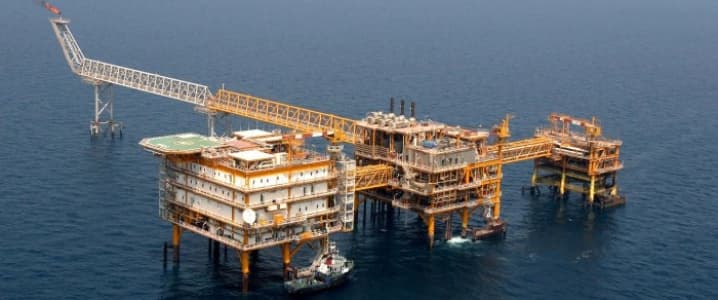Happy Friday! What a tumultuous week it has been (the first day seemed like a week, and the second day seemed like five days). The trifecta of monthly reports from EIA, IEA and OPEC this week have colluded to send crude prices bumbling, stumbling and tumbling lower. Hark, here are five things to consider in oil markets today:
1) Let's dive straight into the OPEC report released today. Direct communication from Iran pegs production from the Persian Gulf state up 210,000 barrels per day from last month, the biggest increase since sanctions were lifted, boosting their production to 3.92 million bpd.
(Click to enlarge)
This initially makes sense from a ClipperData perspective, because exports appeared to have plateaued in recent months, reflected in a corresponding peak in Iranian production - affirmed by OPEC's production data.
Iranian export loadings last month, however, climbed above the 3mn bpd mark for the first time since sanctions were lifted. But this increase doesn't seem due to rising production.
Our ClipperData show exports ramped up significantly in the latter half of the month, and our floating storage data indicate that crude waiting offshore Asaloyeh and Kharg Island dropped swiftly by 10mn bbls starting in late October, after holding steady around 30mn bbls for the last few months.
Iranian production could well be lower than direct communications suggest; the OPEC member may instead be maximizing revenue and inflating production ahead of the cartel's meeting at the end of the month.
(Click to enlarge)
2) There was a minor downward revision to demand growth from OPEC for this year, as well as a minor downward adjustment to non-OPEC supply. In terms of OPEC production, in addition to Iran's increase from direct communication we saw Iraq tick marginally higher to 4.776mn bpd (while secondary sources showed 4.56mn bpd) while Saudi ticked marginally lower to 10.625 (secondary sources showed 10.53mn bpd). Related: World Oil And Its Seven Biggest Chokepoints
On the aggregate, secondary sources peg OPEC production at 33.64mn bpd, a new record, and 1.14mn bpd adrift of their potential downside target.
3) The cartel sees total OECD commercial stocks at 3,052 million barrels, some 304 million barrels above the five-year average. They have built at a considerably slower pace through the first three quarters of this year - 67mn bbls compared to 248mn bbls - as crude inventories have leveled off in tandem with supply growth this year.
As the market moves closer to balance this year, total stocks have built by 1.1mn bpd, compared to almost double that seen for the first three quarters of last year.

4) The chart below is an update to Saudi's foreign reserves (h/t @JKempEnergy). After peaking in August 2014 at $746 billion, Saudi Arabia’s foreign reserves have now dropped to $555 billion in September in the last two years. At this pace, they will be completely erased in six years.
This in itself helps explain the motivation for Saudi to push for a production cut at the OPEC meeting. With the kingdom seeing a quarter of its foreign reserves whittled away, it is still on target for an $87 billion budget deficit this year.
(Click to enlarge)
5) Finally, yesterday's weekly natural gas storage report showed a 54 Bcf injection, propelling storage to a new record of 4,017 Bcf. Injection season this year was the second lowest level since 2007, some 39 percent below last year's pace, and 31 percent below the five-year average. Related: Oil And Gas - Huge Victors Of The Presidential Election
This was due to a number of factors, including a record power burn during the summer as natural gas continues to displace coal in the power generation mix, as well as domestic production turning lower after ten consecutive years of growth. A lack of urgency to fill storage given low prices and a record high starting point for injection season (hark, 2,470 Bcf) also contributed.
But it has been the delayed start to winter which has really encouraged storage to rise of late. While injections normally continue into November, it is less usual for them to persist through to Thanksgiving. With another week of above-normal temperatures under our belt (to show up in next week's report), and a forecast blanketed with above-normal temperatures for the next two weeks, we likely have a couple more injections left to come.
Hark, record high start for injection season this year, and a record high finish:

By Matt Smith
More Top Reads From Oilprice.com:
- President Trump: This Is How To Bring Back 1 Million Energy Jobs
- IEA: If OPEC Doesn’t Cut, We’ll Drown In Oil
- Trump To Clear Way For Oil Pipelines





















